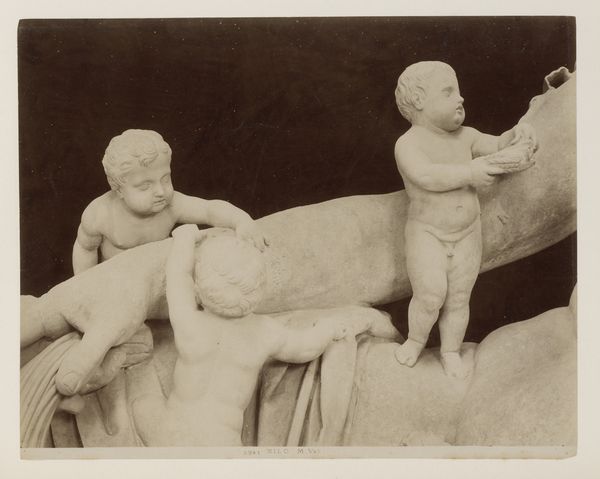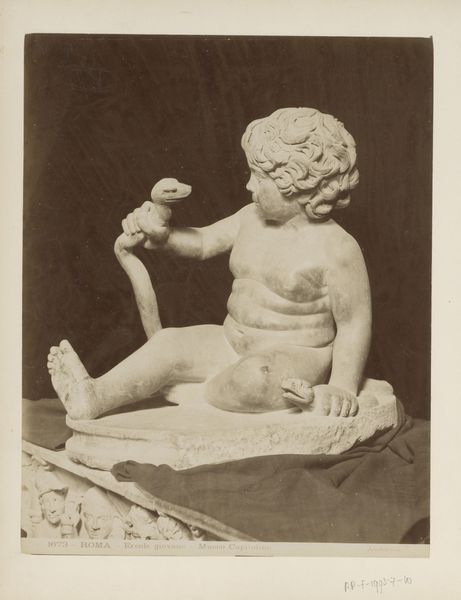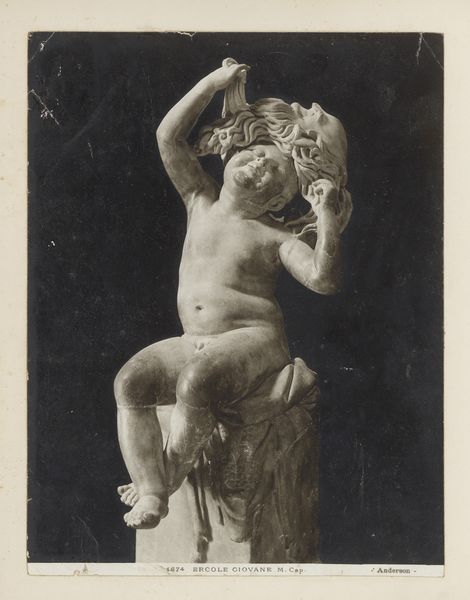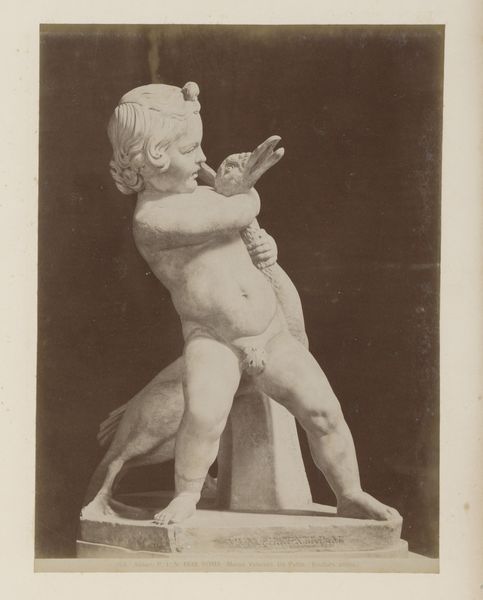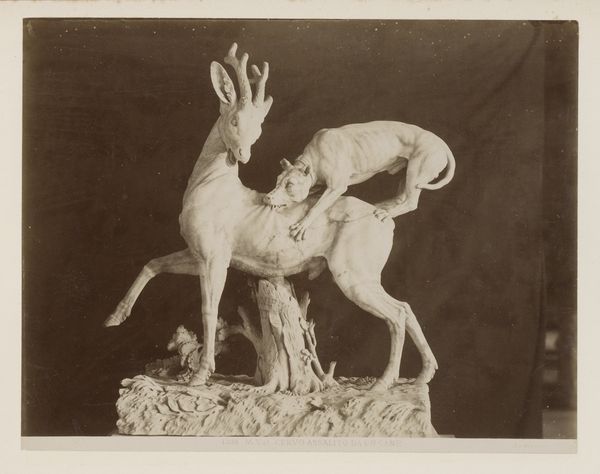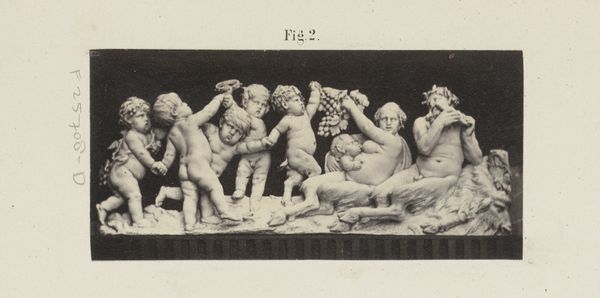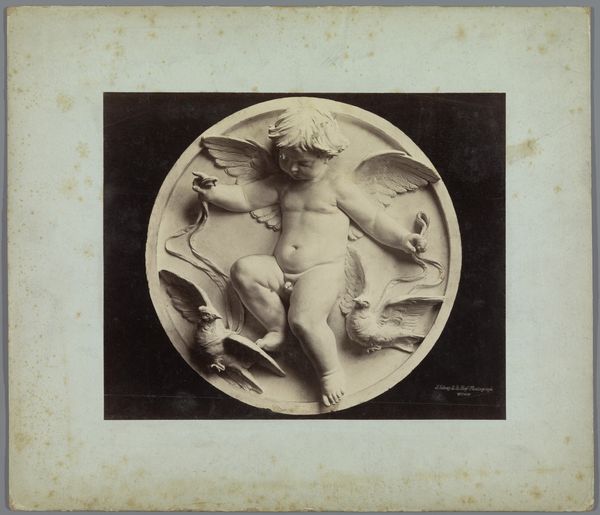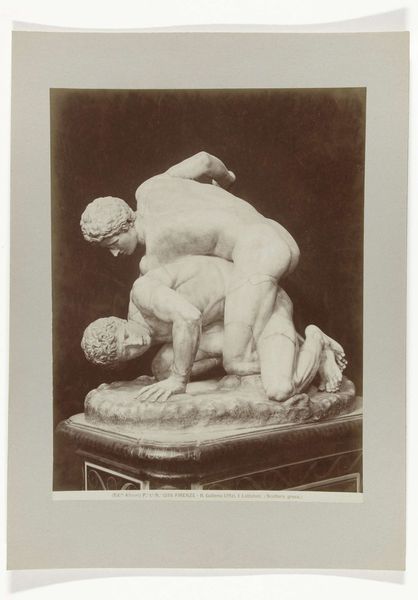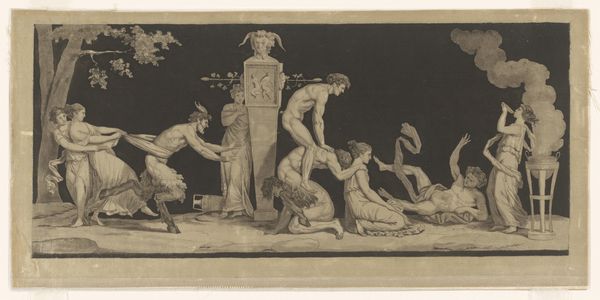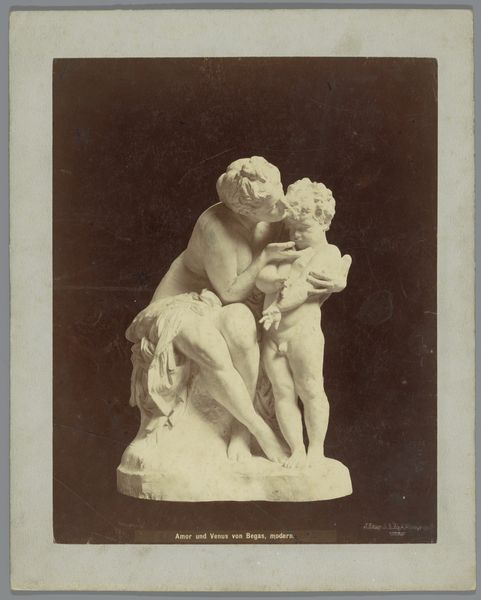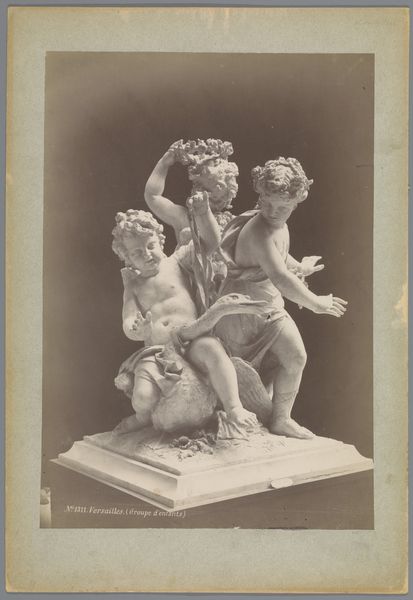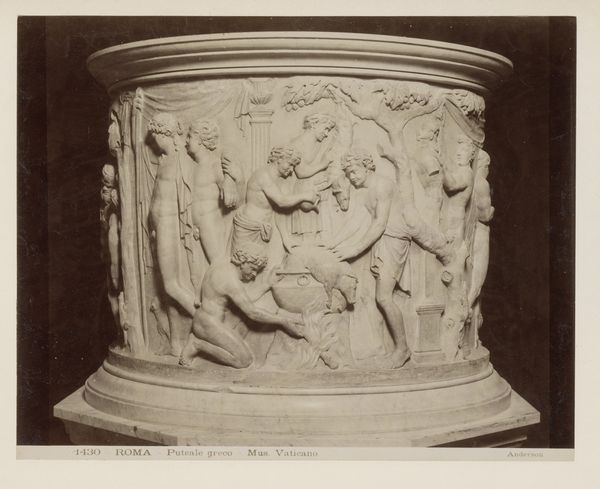
sculpture
#
sculpture
#
greek-and-roman-art
#
sculpture
#
cityscape
#
realism
Dimensions: height 199 mm, width 259 mm
Copyright: Rijks Museum: Open Domain
Curator: Here we see a photographic study of the sculpture known as "The Nile," which resides in the Vatican collection. This image dates to around 1885-1910. Editor: It's quite striking, even in monochrome. There's a definite tension between the seemingly innocent cherubic figures and the crocodile, which I assume symbolizes the river's inherent dangers. It’s like innocence grappling with nature’s brute force. Curator: Precisely. Images like these are fascinating because they offer insights into how European perceptions of power dynamics, and colonial relationships were often subtly coded. Think about it—the river Nile, Egypt—long considered the cradle of civilization, is here visually subjugated by youthful, distinctly European-looking figures. Editor: So you're suggesting it's a symbolic assertion of dominance? A claim to mastery over nature, perhaps mirroring Europe’s colonial ambitions in North Africa? It's uncomfortable to think that these children may be surrogates for imperial power. Curator: That's one way to interpret it, yes. During this period, art played a crucial role in shaping and reinforcing narratives of Western superiority, both intentionally and unintentionally. Consider, for instance, the distribution of such images; their display in public institutions played a significant part in normalizing certain colonial ideologies. Editor: I hadn’t fully considered how photographs of existing artwork were another tool in constructing an idea. It certainly makes me reflect on whose stories get told through art, and how the presentation itself is never neutral. Curator: The layers of interpretation never truly end. These images can inspire new conversations, or re-ignite difficult ones. Editor: Exactly, they're a stark reminder that history doesn't stay confined in books; it actively shapes the power structures that govern contemporary social, cultural and political existence.
Comments
No comments
Be the first to comment and join the conversation on the ultimate creative platform.

